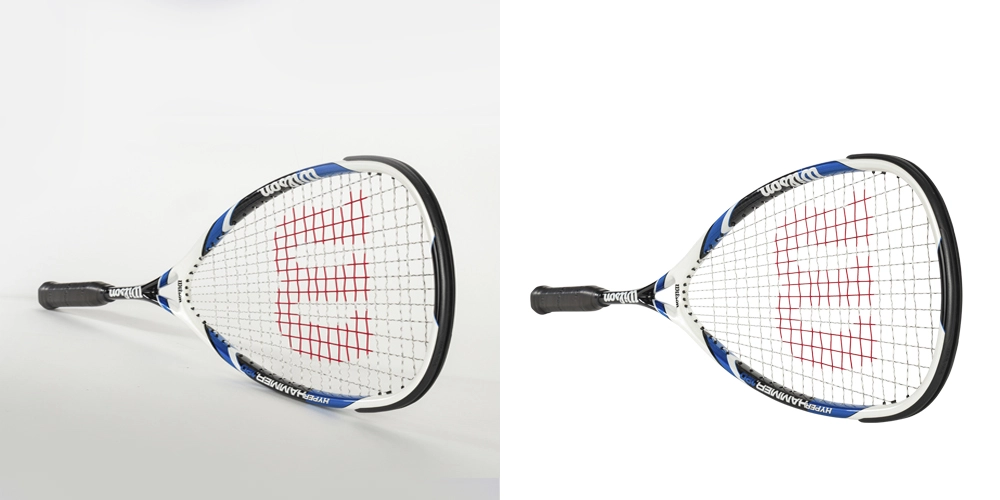You may already know pretty well that clipping path and image masking are both the most popular and fundamental techniques of Photo Editing. — And, the primary step of Background removal. In this discussion, I’m going to clarify the main 2 key points — ‘What are the differences between Clipping Path vs. Image masking?’ ‘When should you use which technique?’
Before starting, I want to clarify that this discussion is for Photoshop/photo editing learners and for those who need photo editing services.
In photo editing, clipping paths and image masking have the same goal. Both work for perfectly isolating the desired part that you actually want to keep from the image. — But, there is a key difference between these photo editing techniques.
The clipping path works like digital scissors by accurately drawing the path around the objects and cutting them out with perfect pixel quality. On the other hand, the Image Masking technique works like painting a mask on the image to show the specific parts.
While the clipping path is used for solid or well-defined edges, such as – clothing or simple objects that have straight lines and minimal details — here Image masking is used for soft edges or complex detail objects, such as – hair, fur, or transparent objects that have transparency and need smoother transitions and finer control.
Importance of Clipping Path and Image Masking In Background Removal
After photographing shots, each image needs editing before publishing. And, widely, E-commerce often needs background removal services to make the products presentable. You may see online stores, where almost all products are presented on a white background. —Where the clipping path and Image masking technique are used.
Additionally, to change color and other additional tasks these techniques are used. Here are 4 key reasons why we (graphic designers) love to use these:
Easily cut out with Accuracy and Precision: When the case comes to transforming the product background into a white one, or into others, the designer has to make sure that the product’s edges are cut with perfect precision (to make it stand out).
Otherwise, you may lose your customers and it will be unpresentable. To create products edge-perfect, professionals use the clipping path & image masking method.
The clipping path process can bring high accuracy and precision to sharp, clear & defined edges. And, image masking can bring high accuracy and precision to transparent, complex, and detailed edges.
Scalability: As the clipping path is a vector-based technique, therefore the object can be scaled without losing quality. Sometimes it’s essential to resize images to use them on different platforms — where it ensures that the edges remain crisp regardless of the image size.
Handling Complex Edges: If the product/object’s edges are complex or transparent, which is mainly tough to select and separate, this case can be handled through the image masking method.
Layer Adjustments: During the edition process, when we need to adjust the specific parts of the image without affecting the whole photograph, the masking method helps to correct that.
When should I choose which method?
Although both Clipping Path and Image Masking work for the same purpose, therefore, you may have the question in your mind yet — Clipping Path Vs. Image Masking… When should I choose which method?
The answer is at the top, also. If your image’s desired part’s condition is with a solid edge, less detailed, and non-fuzzy objects, such as – machinery, bottles, boxes, shoes, etc — then, you should choose the clipping path technique instead of masking. Even, if the object has geometric shapes such as rectangles, circles, or polygons, this method is perfect.
On the other hand, If your Image’s desired part’s condition is with intricate or complex edges or semi-transparent objects, such as – hair, fur, feathers, veils, glasses, smoke, etc — then, you should choose the image masking technique instead of Path — Even when creating composite images that require the smooth blending of multiple layers.
Not only selecting the right technique is enough, but selecting a professional service provider is also necessary (as it is used for commercial & serious purposes).
Find Here: Affordable & Professional Clipping Path & Image Masking Service Provider
Use Cases of Clipping path & Image Masking
Both cut-out methods have their unique strengths and applications. The choice depends on the complexity level of the subject. Here are some of the most popular use cases for clipping paths and image masking —
E-commerce and Product Photography:
In e-commerce and product photography, these cut-out methods are used for removing product backgrounds, attaching in white backgrounds, shadow creation, reflection creation, and image retouching.
Graphic design:
In graphics design, these cut-out methods are used to cut out products or models to place them in the chosen backgrounds or layouts for flyers and brochures — As well as for easily combining precisely cut-out elements and multiple images into seamless compositions.
Advertising:
For visually appealing advertisement banner ads, posters, billboards, magazines, and catalogs – designers need to create clean and professional presentations, where they often have to use accurately cut-out elements.
Fashion industry:
In the fashion industry, after model photoshoots, each photo goes through a photo editing process ( like photo retouching, background replacement, etc.) for reveal in magazines, online stores, advertisements, and social media.
Photo Manipulation:
In photo manipulation, when the case comes to adding special effects and filters to specific elements without affecting the whole image, here is the technique used.
Online to offline, clipping path and image masking have demand in each sector and are widely used in photo editing – there are no limitations to use cases.
Advantages & Disadvantages (Pros & Cons)
Clipping Path: The Precision Cutter
Advantages —
- Perfect for sharp lines & crisp edges products;
- Easy to isolate the object & complete the adjustment;
- The result is usually good for web use for the small file size.
Disadvantages —
- This method is not suitable for objects with soft edges or for blending into the background;
- Tedious for complex shapes or hair.
Image Masking: The Detail-Oriented Sculptor
Advantages —
- Perfect for soft edge products, like hair or flowers;
- Has great flexibility, perfect for complex shapes or objects blending into the background.
- Masks help smooth transitions and blending, which is perfect for creating composite images & intricate designs.
Disadvantages —
- This method is not suitable for objects with soft edges or for blending into the background;
- Tedious for complex shapes or hair.
How Do They Work?
Although clipping path and image masking are different, but commonly Adobe Photoshop software is used to do it, in image editing.
How Clipping path works….?
In Adobe Photoshop, we use the most popular pen tool (even every professional uses it) to create paths around the desired part that we want to keep. After creating, when it is applied, the inside part of the path is included and the outside part is discarded.
This method is faster than image masking, but it’s only suited to solid-edge objects. And, as a result, we get clean and sharp-edge objects, that seamlessly fit on any background. However, besides the Pen tool, Photoshop’s Lasso tool & Magic Wand tool are sometimes used for clipping paths.
Learn In detail: How to create Clipping path in Photoshop 2024? Step-by-Step
How Image Masking works….?
For image masking, we use Adobe Photoshop software — even all professional designers commonly use it instead of other third-party software. In Adobe Photoshop, we add a layer mask to that layer that needs editing. Like the clipping path process, we select the object with any of the selection tools, then apply the mask, refine the mask, and combine the mask.
Basically, the mask is a grayscale image – where 3 shades mainly work – white, black, and gray. In the mask area, the white-painted area mainly shows the parts, the black-painted area hides the parts and the gray-painted area provides varying levels of transparency.
This method can take time compared to the clipping path, but it brings a smoother evolution on the soft edges.
Learn: How to create Image Masking in Photoshop 2024? Step-by-Step
Keep in mind, whether you are using the clipping path or Image masking, the professional output requires a professional editor. In a word, without Photoshop tools-using experience, you can’t bring a natural feel to the edition – therefore, you must get help from a professional if you are not an expert, and the edition is for use purposes.
Cost and Efficiency
That quietly depends on Time & Efforts… The Clipping Path process is faster for simple objects and easy to complete — therefore, the cost is slightly cheaper (starting around $0.35 per image) compared to Masking. The Masking process is time-consuming because of highly detailed objects — therefore, the cost is expensive (starting around $0.85 per image) compared to the clipping path.
However, professional graphic designers may charge more depending on their demands, efforts, and time.
Quality & Output
Both image masking and clipping paths are good for bringing natural looks to image output. Even image masking provides more post-processing flexibility and allows for slight adjustments to image visibility and transparency.
If we talk about quality, then I want to remind you again that satisfying quality & output also depend on the editor… So, make sure you select a professional graphic designer to handle your tasks. Hope you get a satisfying result.
Case Studies ( Our Previous Work Sample)
Graphic Studios LTD. offers Professional Photo editing services including Clipping path, Image Masking, Background Removal, and so on at an affordable budget. Look at a glance at some of our recent projects’ short samples… If you want to see more, then simply contact us.
Clipping Path
Image Masking




